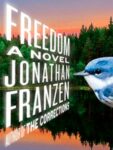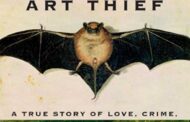Book Short
How to live freely in a confusing world
Review by Stephanie Miller
Neighbors play a big role in “Freedom,” a novel by best-selling author Jonathan Franzen. Some are kind and friendly, others are competitive and vindictive.

This excerpt from the first page of the first chapter sets the tone for the full novel:
“According to a long and very unflattering story in the Times, Walter had made quite a mess of his professional life out there in the nation’s capital. His old neighbors had some difficulty reconciling the quotes about him in the Times, (“arrogant,” high-handed,” “ethically compromised”) with the generous, smiling, red-faced 3M employee they remembered pedaling his commuter bicycle up Summit Avenue in February snow; it seemed strange that Walter, who was greener than Greenpeace and whose own roots were rural, should be in trouble now for conniving with the coal industry and mistreating country people. Then again, there had always been something not quite right about the Berglunds.”
I understand if after reading that, you now abandon reading the rest of this article and head for the nearest bookstore. Franzen is a very good storyteller, especially with character development and dialogue.
While the novel jumps around in narrator voice and timeframe, and is sometimes unnecessarily winding, he weaves a story about Walter and Patty Berglund and their struggle to be happy in a very changeable world. Fundamentally, they don’t quite understand what attracts them to each other, what repels them about each other, and how they possibly could have ever thought they could understand each other. Endangered birds, young, pretty associates, sexy rock star best friends, selfish children, and yes, quite a few neighbors, all try to separate them. Surprisingly, no one succeeds in breaking their bond.
You can safely count this book among those supportive of the environment. It includes a fantastic, and possibly even realistic, collaboration between industry, government, and nature. That’s how Walter gets into the trouble that his old neighbors’ gossip about, but it’s completely believable how he thought he was one of the good guys all along.
Micro-Shorts
Where the Lost Wander: A Novel By Amy Harmon
I’m always fascinated by the stories of pioneers, especially women. They had to take care of families, have babies, manage the wagon, and play politics with others – all while doing a large share of dusty, manual labor and animal management. This novel follows widowed, twenty-year-old Naomi traveling on the wagon train with her family who falls in love with a cowboy, John, who is half Native American.
John’s perspective, with one foot in each of the white and native worlds, is fascinating, and helps highlight how different tribes dealt with the Europeans’ invasion of their lands. Some were very cooperative and took a long view of the corruption and disrespect of their traditions, and other tribes were confrontational and hostile (can’t blame them, really).
After a horrific tragedy, Naomi and John must overcome grief and anger and make peace with themselves and their life together. It’s a coming of age and love story with good historical grounding and a wonderful mix of traditions and folklore.
Brighton Rock, by Graham Greene
I love a great first sentence, and Greene gives us a treat in this one of his several dozen novels written in the late 20th Century. “Hale knew, before he had been in Brighton three hours, that they meant to murder him.” I also love the last sentence: “She walked rapidly in the thin June sunlight towards the worst horror of all.”
In between, Greene wraps a story around a lonely but loyal girl who stands by the 17-year-old amoral and cornered leader of a gang. He treats her like dirt, but she’s desperate for hope and thirsty for kindness. Not the best known of Greene’s canon, but a gripping story full of deeply flawed, but mostly endearing, characters.
Flying, Falling, Catching, by Henri Nouwen and Carolyn Whitney-Brown
Even if you are not familiar with Nowen’s spiritual writings, this slim book is a thought-provoking commentary on finding and living with freedom. Nowen attends the circus and becomes obsessed with the precision, timing, and beauty of the acrobats on the flying trapeze. His fascination and subsequent friendship with them are the basis of this book questioning what it means to live a life of artistry and fulfillment.
Twenty years after the death of her friend, Whitney-Brown created the book from an unfinished manuscript left by Nouwen. It includes many excerpts from his writings – and a lot of interesting insights about circus life.





